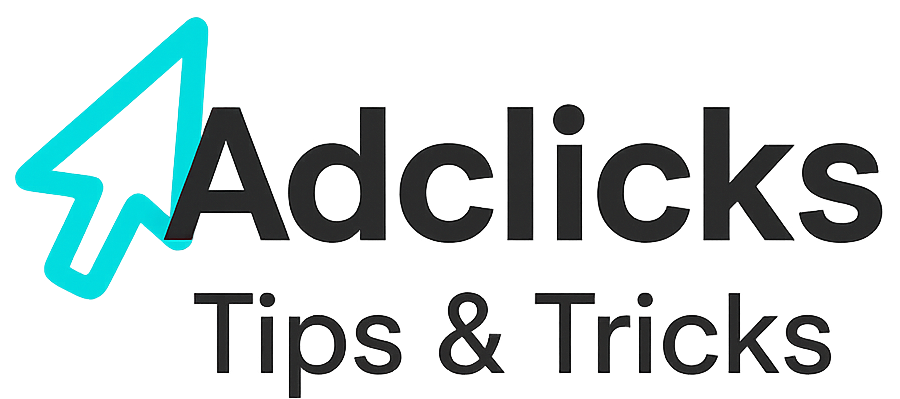When publishers talk about boosting ad revenue, one of the first things they focus on is the number of visitors. Traffic is essential, but traffic alone won’t guarantee success. A site can attract thousands of daily visitors and still underperform if ad placement isn’t carefully considered. With Snipesearch Adclicks, placement is just as important as content, because the location of your ads determines how often they’re seen, how likely they are to be clicked, and how much revenue you ultimately earn.
Adclicks gives you flexibility to use different formats—CPC, CPM, CPA, CPV, POP, and Affiliate—but no format will deliver unless you place it strategically. The right position can turn impressions into meaningful clicks, while a poorly chosen spot can leave high-value traffic slipping by.
Why Placement Matters More Than You Think
A lot of new publishers assume that “ads anywhere are better than no ads at all.” The reality is much more nuanced. Studies in online advertising—and years of publisher experience—show that small changes in placement can dramatically change results. Snipesearch’s reporting dashboard proves this point: by testing different positions, you’ll notice differences in CTR (Click-Through Rate), conversions, and eCPM that are directly tied to placement.
For example, if you bury ads at the bottom of a long article, they may technically rack up impressions, but those impressions are far less valuable because many readers never scroll that far. On the other hand, if you position ads above the fold—within the reader’s eye-line as soon as they land on the page—they’re naturally more visible, and visibility drives clicks.
Above the Fold vs. Below the Fold
“Above the fold” is one of the oldest concepts in web design, borrowed from print newspapers where the most valuable space was on the top half of the front page. Online, it refers to everything a user sees without scrolling. Ads placed here generally enjoy higher CTR, because they’re instantly visible.
That doesn’t mean “below the fold” is worthless. Content-heavy pages often encourage scrolling, and contextual ads placed within or just after engaging content can perform very well. With Snipesearch Adclicks, the key is testing. Use the adcode reports to compare CTRs across placements and find the sweet spot for your audience.
Left vs. Right: The Reading Path Effect
For languages like English, German, and Spanish—where text runs left to right—ads on the left-hand side of the screen often outperform those on the right. This happens because readers’ eyes naturally return to the left margin to start a new line. Ads positioned in that space interrupt their scanning pattern and stand a better chance of catching attention.
That said, don’t assume right-hand placements are useless. If your sidebar already contains useful elements like navigation menus, popular posts, or related links, then ads aligned with that content can perform strongly. The trick is relevance—ads that appear where readers expect actionable content blend more naturally and earn more clicks.
Contextual Integration
One of the major strengths of Snipesearch Adclicks is the ability to blend ads with your site’s look and feel. By matching colours, fonts, or positioning with your design, you can ensure ads look like part of the page rather than intrusive interruptions. This doesn’t just improve aesthetics—it builds trust. Readers are far more likely to engage with ads that feel like helpful recommendations in context.
Think about a recipe blog. Ads for kitchen tools, placed within the recipe body or alongside ingredient lists, will feel relevant and inviting. The same ad at the very bottom of the site’s contact page will feel out of place and be ignored. Placement plus relevance is what turns views into revenue.
Testing Different Formats in Different Spots
Adclicks doesn’t limit you to one format, and that flexibility should be used strategically. Banner ads may perform better across the top of a homepage, while text-based ads might earn more inside blog content. POP ads may make sense for sites with high session times, while Affiliate units may work better in sidebars.
The Adclicks dashboard makes it simple to filter by pricing model—CPC, CPM, CPA, CPV, POP, and Affiliate—and measure performance by location. Use the reporting tools to track which placement-model combinations are working. Don’t be afraid to rotate ad units until you find the strongest performers.
Heatmaps and Analytics
Placement optimization doesn’t have to be guesswork. Tools like Rommie.net provide detailed visitor insights. By layering this data with Adclicks reporting, you can make smarter placement choices backed by real evidence.
Similarly, adding StatCounter to your site can highlight referral sources, bounce rates, and session depth. If you notice that a large portion of your visitors only view a single page before leaving, you’ll want to maximize above-the-fold placements. If instead you see long session times, integrated placements within content become more powerful.
The Balance Between Content and Ads
One of the most common mistakes is overwhelming a page with too many ads. Even though Snipesearch allows multiple adcodes, cluttering the page drives down user trust and can harm long-term traffic growth. The most profitable publishers balance content and ads, making sure readers still enjoy their visit.
The golden rule: design for the visitor, not the ad. If ads enhance the experience—by offering relevant products or services—they’ll perform better. If they feel like noise, readers will tune them out, no matter how well they’re placed.
Mobile vs. Desktop Placement
Another factor often overlooked is device. Mobile traffic now represents the majority for many publishers, and placement that works on a wide desktop screen may fail on a phone. For instance, sidebars often collapse or disappear entirely on mobile, meaning those placements won’t generate clicks.
Continuous Improvement
Ad placement isn’t a one-time decision. Audience behavior changes, design evolves, and advertisers adjust campaigns. The publishers who succeed long-term are the ones who continually test, monitor, and refine their strategies. Use the Top 5 Adcodes display on your Adclicks dashboard to see which placements are driving profit right now, and let those insights guide future experiments.
Remember, every site is unique. A placement strategy that works wonders for a news blog may flop on an e-commerce store. That’s why Snipesearch’s mix of real-time reporting, time-based performance data, and adcode-level granularity is so powerful—it gives you the feedback you need to adapt quickly.
Where your ads go matters just as much as what content you publish. With Snipesearch Adclicks, publishers have the tools to test, track, and optimize placements across formats, devices, and audiences. Success doesn’t come from guesswork; it comes from analyzing reports, leveraging insights from tools like Rommie.net and StatCounter, and continuously refining strategy.
Ad placement isn’t about tricking readers—it’s about creating relevance and visibility. Position ads where they naturally fit, monitor performance, and build on what works. Do that consistently, and your impressions turn into clicks, your clicks into conversions, and your conversions into sustained profit.
Support
Support: https://support.snipesearch.co.uk/
FAQ: https://adclick.snipesearch.co.uk/index.php?page=index/faq
Contact Form: https://adclick.snipesearch.co.uk/index.php?page=user/support
Stay Connected
Snipesocial: https://www.snipesocial.co.uk/pages/snipesearch
Twitter: https://twitter.com/snipesearch_uk
Facebook: https://facebook.com/snipesearch
LinkedIn: https://linkedin.com/company/snipesearch/
YouTube: https://youtube.com/@snipesearch




